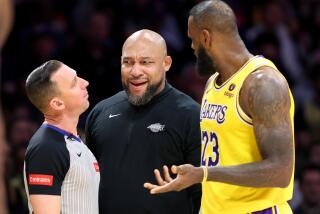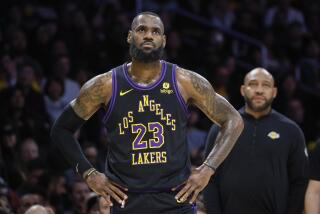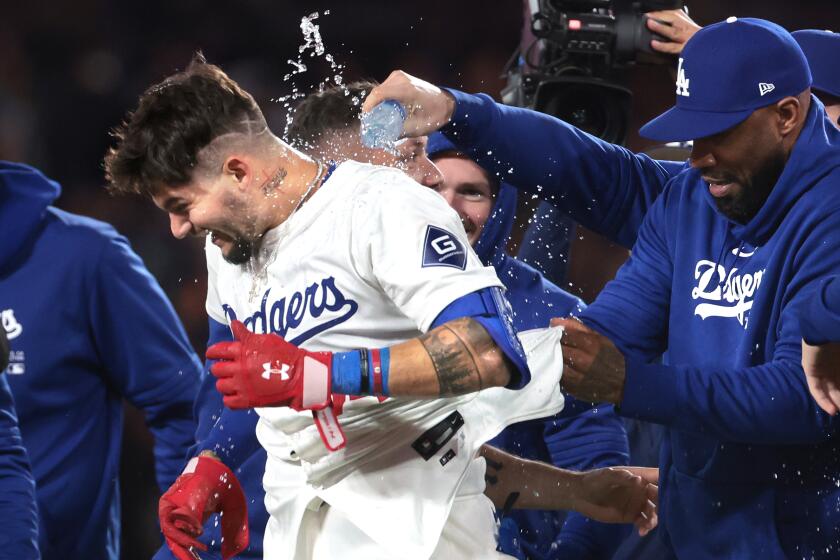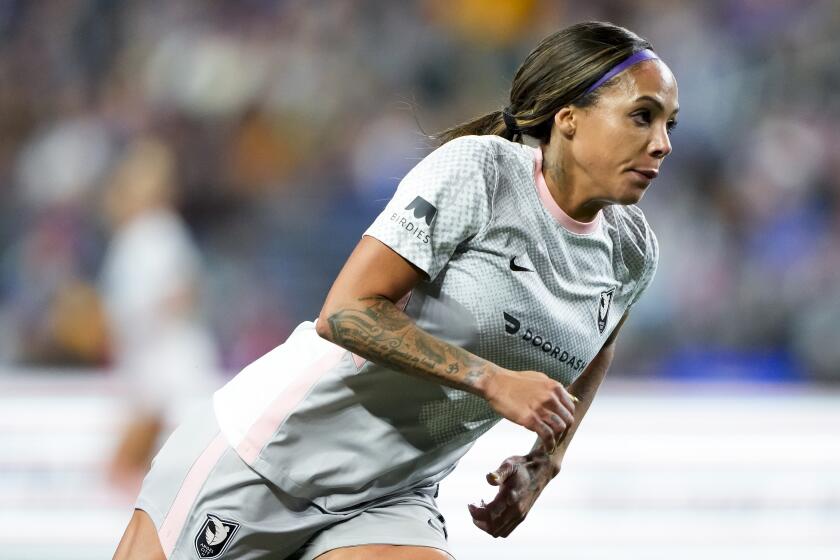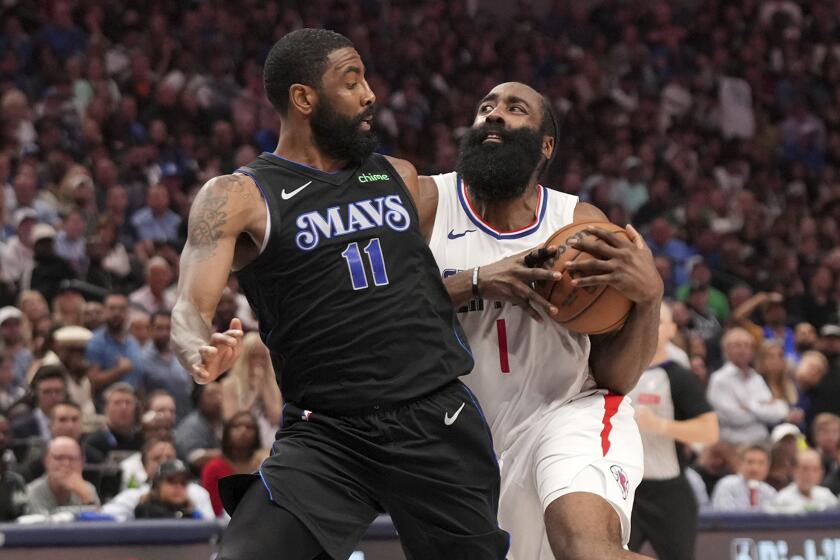Doomsday not what it used to be
There really is a doomsday scenario for the NBA lockout ... orchestrated as this has been, following the NFL lockout that didn’t turn out so apocalyptic, after all.
Of course, there really are game plans too, in which the prevailing gloom is purely tactical, as owners and players mobilize for war ... and make sure the other side knows it.
Amazingly, despite the gulf separating them, before ever starting to bargain in earnest, the real deal is:
They’re halfway across that gulf.
Imagine that, a split between perception and reality, after an unprecedented, yearslong buildup, foreshadowing all-but-assumed shutdowns by the NBA and NFL.
With the NFL turning out to have few, or no, real issues, now reportedly near a deal, it’s clear the hype was less about the leagues than media, itself in its new Internet-driven, doomsday-wielding, sucker-for-labor-posturing incarnation.
Showing how this dynamic works. ...
Because the details in these things are b-o-r-i-n-g, let’s break for my contribution to the doomsday scenarios that are everywhere because, let’s face it, you like them as much as we like making them up!
Most doomsday scenarios end with the possibility of the NBA losing a season, as if that’s so unthinkable, nothing comes after that.
Actually, life goes on, just not the way it was. ...
I see it as the NBA version of the opening scene of “The Terminator,” with a graphic informing us we’re in “Los Angeles 2029 A.D.”
The sky is dark, the landscape barren with twisted metal where buildings once stood.
Dust blows over human skulls piled everywhere.
Laser-shooting drones (our wives asking us to take out the garbage?) swoop over the wasteland, hunting human survivors. Terminators in tanks roll across it, crunching skulls under their massive treads. ...
Yeah, right.
We’re talking about professional basketball, not civilization.
The worst that will happen is the NBA will lose the 2011-12 season with a year’s worth of revenue and salary ... which is their problem.
To fans, it is disappointing but hardly debilitating.
Yes, Virginia, the NBA will be back.
Baseball canceled its 1994 postseason, the NHL shut down its whole 2004-05 campaign, and both were back at the usual time and place the following season.
(Baseball missed 18 more games in 1995, until owners heard the phrase “treble damages,” which losers in an antitrust suit can be assessed, and dropped the whole thing.)
Fans won’t abandon the NBA, although many will vow to and all of them won’t return the first day, or season, as in hockey and baseball, which went on to prosper.
Of course, we’re not there yet.
If the thunder rolling across the NBA for years was louder, there were two reasons:
1) It has actual problems, with a thin profit margin per team.
2) It has Commissioner David Stern, a virtuoso when he was unplugged, whose dropped hints — we could contract! — reverberate as if Jimi Hendrix has returned in the body of a little silver-haired guy.
Stern’s problems are encapsulated by one owner, Phoenix’s Bob Sarver, who paid top dollar — $400 million — ran his team into the ground and, as a banker, took a huge hit in his day job.
However sympathetic Sarver is, Stern has 30 bosses and he’s one of them.
Needing a radical giveback, Stern started with an eye-opener, or eye-roller: The owners would get the players’ 57% share of revenue.
Knowing fans have no hope of dealing with distinctions between “operating income” and “annual losses,” which could also be called “paper losses,” Stern announced his owners were dropping $350 million a season — and gave the union their IRS returns to prove it.
These reportedly include interest payments, as well as writeoffs for depreciation.
Interest, the big item, is high because a) franchise values keep going up, signaling the industry is healthy, and b) owners, like home buyers, put down as little and borrow as much as they can.
Publicly traded companies report earnings in the form of “operating income,” without those items.
On that basis, using projections by Forbes and Financial World, the influential Nate Silver noted the NBA made about $180 million in the 2009-10 season in his New York Times blog.
The NBA was so stung, it put out an announcement debunking Silver ... while continuing to ignore the distinction between “operating income” and “paper losses.”
If owners and players see no purpose in conceding they’re headed in the right direction, here are the numbers:
Union head Billy Hunter said the players would take 54.3% of revenue ... $113 million giveback based on next season’s projected $4.2 billion.
Stern says his owners will “at least triple” the $49 million in revenue they now share.
This suggests Hunter would ultimately go to 52% ... and Stern would quadruple revenue sharing.
That would be $357 million — equaling the owners’ paper losses.
Of course, if they were $1 apart, they wouldn’t concede it before Sept. 1.
Whatever else happens, your summer will be better than theirs.
More to Read
Get our high school sports newsletter
Prep Rally is devoted to the SoCal high school sports experience, bringing you scores, stories and a behind-the-scenes look at what makes prep sports so popular.
You may occasionally receive promotional content from the Los Angeles Times.

